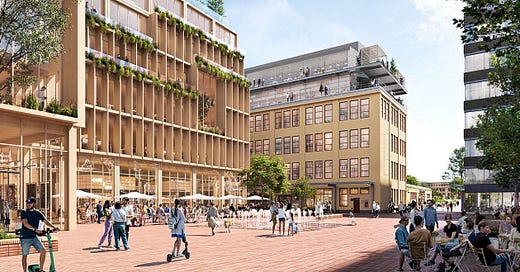Stockholm real estate developer Atrium Ljungberg has unveiled plans to expand the '5-minute city' neighbourhood of Sickla with the world's largest wood-based urban construction project.
You can read about this, and other innovative timber based projects in our recent blog.
Stockholm real estate developer Atrium Ljungberg has unveiled plans for the 250,000 sq m Stockholm Wood City, the world's largest wood-based urban construction project, with construction set to begin in 2025 and the first buildings ready for completion in 2027. The Sickla neighbourhood in southern Stockholm will include 7,000 business spaces and 2,000 houses, with the focus on self-produced, stored and shared energy.
As well as reducing CO2 emissions, the development has a broader sustainability remit. Atrium Ljungberg will invest in resource-efficient construction techniques and circular material flows. With the abundant business space, the development also aims to reduce commute times for locals which has both wellbeing and emissions benefits.
The built environment, including residential and commercial buildings, communal areas such as parks and supporting infrastructure such as energy networks and water supply, generates almost 40% of energy-related GHG emissions and it consumes 40% of global raw materials.
So, it's not surprising that it's a target for a lot of new regulation - aimed at making our buildings more energy efficient and improving their sustainability. The good news is that there are many financially viable tools and techniques we can use to deliver on this. But as with all of the transitions, we need to avoid green washing, by ensuring that the environmental and societal gains (health, well-being and DEI) are real, and that we find ways of actually delivering the financial benefits we are seeking.
One part of the solution to some of our hard to decarbonise sectors (cement and steel), could be to use different materials in construction. Timber is a material we have used for thousands of years, and technological improvements, such as glulam (glued and laminated) beams, mean that it can be used as a structural element, allowing the construction of taller timber commercial and office buildings. There are a number of examples of large buildings that have been successfully developed. Timber use in low rise residential buildings is already increasing.
But it’s use in higher rise buildings is still limited, partly because of regulations and partly due to a lack of expertise among builder designers and developers.





